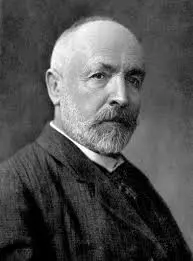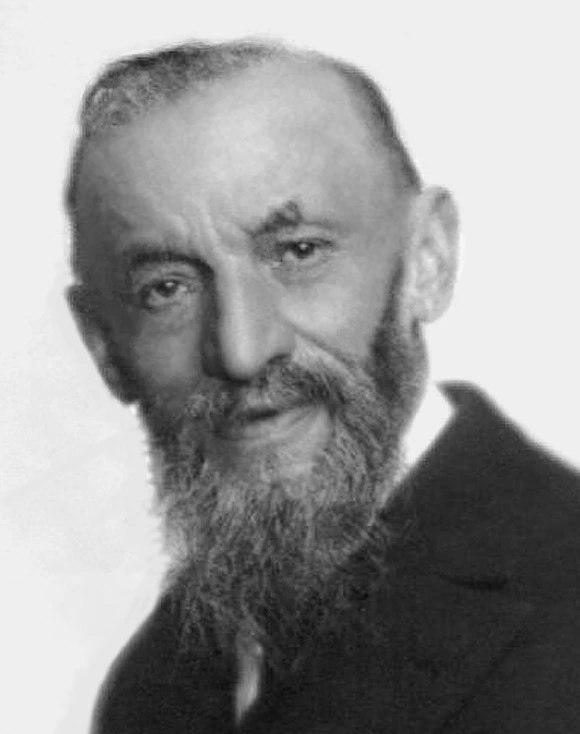Introduction to Sets
The Concept of a Set
The basic concepts of set theory were created and developed in the late \(19\text{th}\) century by German mathematician Georg Cantor \(\left( {1845 - 1918} \right).\)

According to Cantor's definition, a set is any collection of well defined objects, called the elements or members of the set.
Sets are usually denoted by capital letters \(\left( {A,B,X,Y, \ldots } \right).\) The elements of the set are denoted by small letters \(\left( {a,b,x,y, \ldots } \right).\)
If \(X\) is a set and \(x\) is an element of \(X,\) we write \(x \in X.\) The symbol \(\in\) was introduced by Italian mathematician Giuseppe Peano \(\left( {1858 - 1932} \right)\) and is an abbreviation of the Greek word \(\epsilon\sigma\tau\iota\) - "be".

If \(y\) is not an element of \(X,\) we write \(y \notin X.\)
Defining Sets
There are two basic ways of describing sets - the roster method and set builder notation.
Roster Method
In roster notation, we just list the elements of a set. The elements are separated by commas and enclosed in curly braces. For example, \(X = \left\{ {1,5,17,286} \right\}\) or the set of natural numbers including zero \({\mathbb{N}_0} = \left\{ {0,1,2,3,4, \ldots } \right\}.\)
In a listing of the elements of a set, each distinct element is listed only once. The order in which elements are listed does not matter. For example, the following sets are equal:
When writing infinite sets and there is a clear pattern to the elements, an ellipsis (three dots) can be used.
Set Builder Notation
In set builder notation, we define a set by describing the properties of its elements instead of listing them. This method is especially useful when describing infinite sets.
The notation includes on or more set variables and a rule defining which elements belong to the set and which are not. The rule is often expressed in the form of a predicate. The set variable and rule are separated by a colon ":" or vertical slash "|".
Examples:
- The set of all uppercase letters of the English alphabet.
\[U = \left\{ {x\,|\,x \text{ is an uppercase letter of the English alphabet}} \right\}\]
- The set of all prime numbers \(p\) less than \(1000.\)
\[P = \left\{ p\,|\,p \text{ is a prime number and } p \lt 1000 \right\}\]
- The set of all \(x\) such that \(x\) is a negative real number.
\[X = \left\{ {x\,|\,x \in \mathbb{R} \text{ and } x \lt 0} \right\} \text{ or } X = \left\{ {x \in \mathbb{R}\,|\,x \lt 0} \right\}\]
- The set of all internal points \(\left( {x,y} \right)\) lying within the circle of radius \(1\) centered at the origin.
\[C = \left\{ {x,y \in \mathbb{R}\,|\,{x^2} + {y^2} \lt 1} \right\}\]
Universal and Empty Sets
A set which contains all the elements under consideration is called the universal set and is denoted as \(U.\) The universal set is problem specific. For example, if a question is related to numbers, the universal set can be either all natural numbers \(\left( {U = \mathbb{N}} \right),\) or all integers \(\left( {U = \mathbb{Z}} \right),\) or all rational numbers \(\left( {U = \mathbb{Q}} \right),\) etc. - depending on the context.
There is a special name for the set which contains no elements. It is called the empty set and is denoted by the symbol \(\varnothing.\) There is only one empty set.
Subsets
A set \(A\) is a subset of the set \(B\) if every element of \(A\) is also an element of the set \(B.\) A subset is denoted by the symbol \(\subseteq,\) so we write \(A \subseteq B.\) If a set \(C\) is not a subset of \(B,\) we write: \({C \not\subseteq B.}\)
The empty set \(\varnothing\) is a subset of every set, including itself.
The sets \(A\) and \(B\) are equal if simultaneously \(A \subseteq B\) and \(B \subseteq A.\) Notation: \(A = B\).
A set \(A\) is called a proper subset of \(B\) if \(A \subseteq B\) and \(A \ne B.\) In this case, we write \(A \subset B.\) Some authors use the symbol \(\subset\) to indicate any (proper and improper) subsets.
The power set of any set \(A\) is the set of all subsets of \(A,\) including the empty set and \(A\) itself. It is denoted by \(\mathcal{P}\left( A \right)\) or \({2^A}.\) If the set \(A\) contains \(n\) elements, then the power set \(\mathcal{P}\left( A \right)\) has \({2^n}\) elements.